A kayak, of the earliest stage was, used for travelling and single transportation. Kayaking is the most satisfying of all fishing methods on any water body, as it offers the luxury of hitchhiking across water, solo or with family on a super-awesome leaf like vehicle on any stretch! An inexpensive and convenient mode of water transportation, best fishing kayak were first made with sealskin.
In the contemporary age too, kayaks have gained an undue popularity because of their healthy mode of transportation as well as economical costs. There are huge a variety of kayaks intended for specific functionality based on their design, manufacture and trend. One must be aware of the history, manufacture, methods of working the kayak and tips for the same, in order to keep kayaking mastered as well as a routine recreational event. In short, get hold of yourself before leaping to buy a new vessel for your expert trip on fishing with kayaks and read ahead!
What is a Kayak?
In order to understand how to use the kayak for fishing, you must first understand what a kayak actually is. A kayak is generally, defined as a boat used for paddling across water and anatomically has the seats with blades-on-paddler. Throughout its 4000-year-old history, kayaks have proved out to be important for survival through historic recollection of fishing cobia as well as for transportation.
A high stealth mode of fishing for schools of fish in one throw is possible on best kayaks for fishing, as it moves in-sleuth when in attack. The kayaks of today are fitted with ingenious technologies that can help you relax for days on water or fish a king mackerel as well!
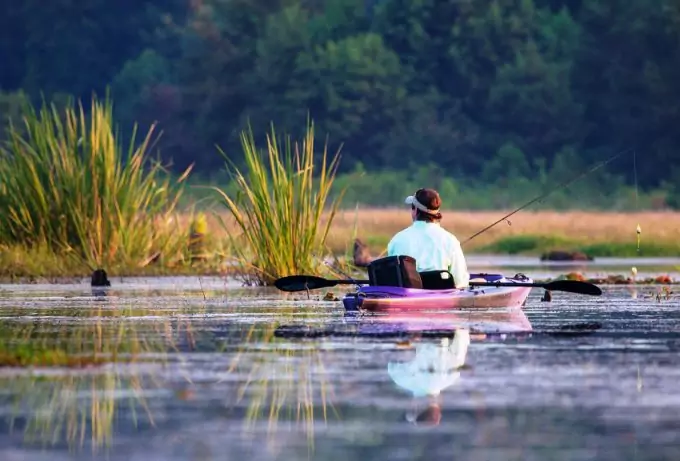
With technology creating the demand for advanced accessories and amendments, kayaks today are major sporting equipment. Some of the exclusive designs and types of kayaks available today are with built-in coolers, GPS receivers, hatches and equipment mounts. Apart from the fact that the modern day kayaks are motorised to provide perfect angles, there are a variety of kayaks with sizes varying from 5ft to 26ft.
Anatomically, a kayak is a narrow boat with a covered deck along with 1+ cockpit, one for each paddler. Occasionally, some kayaks are, made with a spray deck that covers the cockpit.
Some of the materials used in making kayaks today are:
- Plastic
- Fiberglas
- Wooden
- Strip-built
- Stitch and Glue
- Skin on-frame
What is a fishing kayak?
It was not long after the invention of fishing kayaks that kayaks started to be, used as a trendy recreational sport of official anglers. With flounders and mackerel rarely coming to the bait, fishing on kayaks became an instantly viral trend. Today, kayakers have everything from bait holders to anglers fitted in their super-advanced Computer Aided Kayaks.
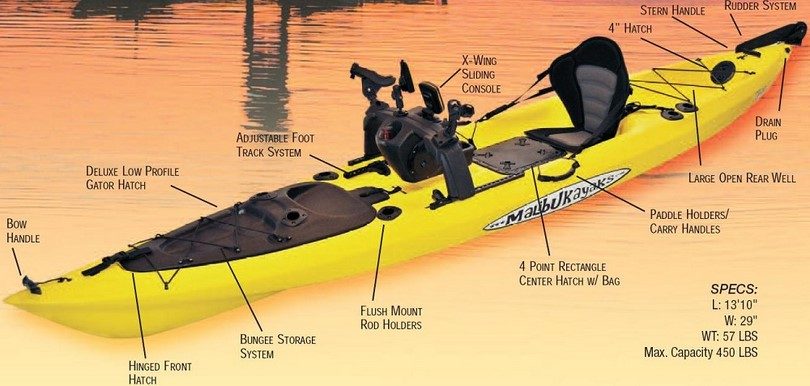
A fishing kayak is a kayak used for fishing anything alive in water. The native people are not; known historically to have used a kayak to fish, but today it is a common way of fishing. Some of the facilities in-built in a fishing kayak apart from the aforementioned are running lights, anchor trolleys, live wells, additional crates and inflated shelves.
Today, there are specialized kayaks with safe angles of fishing and riding in a stand-up position. With advancement in fishing, kayaks have also had several upgrades of its speed mechanisms. With similar fishing methods, kayak fishing is almost identical to all other modes of fishing. The complexity lies in balancing all acts, skills and adrenaline-rushes on the thin stability of your little kayak. With varieties of kayaks existent today, kayaking has become an entertainment attraction for amateurs and experts.
Learning to fish with a kayak successfully each time requires expert skills. Much of the skill of a kayaker is dependent on the make and design of the kayak. As there is as strong demand for customized and advanced kayaks for everything from sightseeing to fishing to whining, modern day kayaks have great technologies and comfort mechanisms fitted on it.
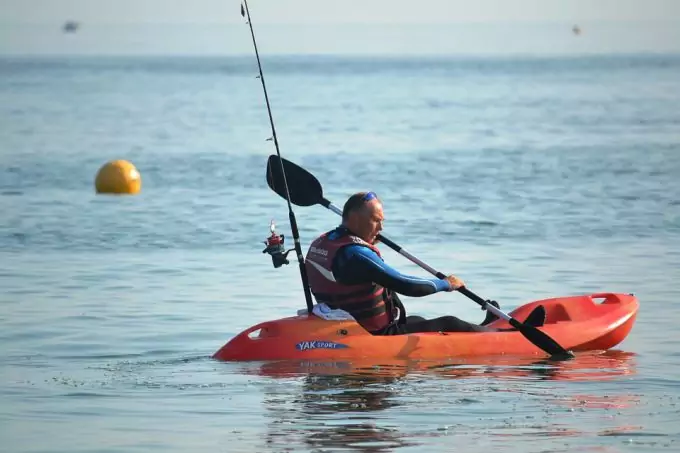
Today, a kayaker can actually hitchhike through the blue waves safely, thanks to the GPS, motorized paddles and fancy inflated pouches!
History of fishing kayaks
With the Arctic inhabitants starting the use of kayaks for transportation, it has drastic and significant changes in its design, manufacture, motive and activity. The word kayak is, derived from the Inuktitut word ‘qajaq’ meaning ‘hunter’s boat’ or ‘man’s boat’. The boats were, used for transportation and carrier of goods to go inland as well as coasts or oceans.
The first kayaks were, made from sealskin by sewing them over a frame constructed out of skeletal whalebone or wood. They were, covered again with an exclusive skin jacket to seal off any water damage. Today, this has grown to become spray decks that keeps the water off and the kayak in angle. The Eskimos had many types of kayaks in their times, each of a specific measure:
- The minimum length = 3 X Outstretched arms of an Eskimo
- The minimum length = Width of Builder’s hips + 2 Fists (Or less)
- The minimum depth = Fist + Outstretched thumb
- The average dimensions used were: 17 ft long, 22” wide and 7” deep;
- This is a historical measurement system that puzzled the European settlers to incomplete their task of duplicating the early engineering of kayaks;
The contemporary design originates from the manufacturers of Alaska, Canada and Greenland. With increased use of kayaks, the communities started to use it for recreation, exploration, navigation, transportation and hunting. Early preys hunted were seals, caribou and whales. In the 50’s fiberglass hulls and wooden hulls were, introduced to the kayak industry, from where the globalization of industrial best fishing kayaks began to reach today’s’ Computer Aided, transparent, Plastic and Polyetheylene resins kayaks with GPS and motors!
Types of fishing kayaks
Modern category of kayaks has undergone a variety of amendments until date to produce the best of kayaks for endless interests. The main thing that determines the benefit of kayaking to other modes of sea seeing is that it gives the best comfort for the solitary bliss.
Today, kayaks are in-built with amazing technologies, that one would instantly turn the kayak into the RV (Recreational Vehicle) and live on in the embrace of the sea!
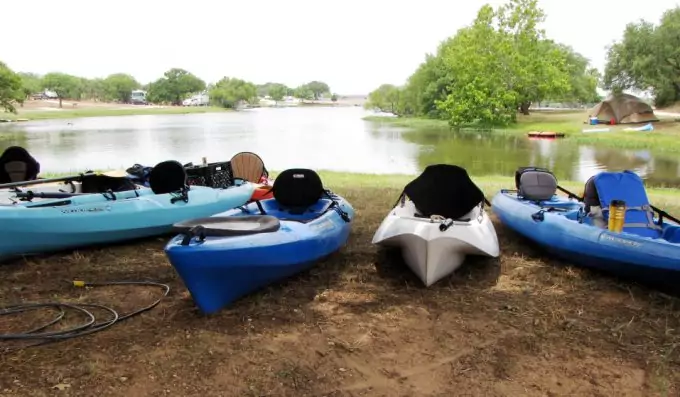
The type of kayak is, determined by their mode of activity and some are:
- Recreational. For casual see-seers enthusiastic about photography, mild fishing, peaceful paddling; these are also known to have sufficient space of convenient entry and exit into the kayak. This is the best affordable option of a kayak as it is, made from Poletheylene products as well as limited options.
- Sea. One of the best expedition or Explorer’s Collection kayaks, Sea kayaks are best suited for 2 or three paddlers for a ride into the sea. The kayak is stable, strong and capable of withstanding average waves of the sea. It is a sit-on-top model where 1-4 paddlers can be, accommodated and is best for scuba diving and fishing.
- Surf. The best entertainment option of the market, kayaks for surfing are flat-bottomed kayaks with hard edges. Made from fibreglass or rotomolded plastic, these work as an ocean surf wave. Surf skis with kayaks are an interesting new place in the corner nowadays.
- Whitewater. These kayaks are made by rotomolding in a partially rigid plastic with high impact, like that of Polytheylene. The engineering is strict and intricate that the boats remains in stable control and structurally sound in necessary conditions.
- Racing. Modified kayaks for racing is, built from mixing an unstable lower hull underneath an upper portion that is, flared to produce stability in open water with flat speed of water racing. These are, made with a super-enforced resin that lasts for long.
- Exploration. Another important aspect of choosing your kayak for exploration and navigation while fishing can be, chosen from the many options that kayaks these days sell.
- Inflating. A variety kayak where the water vehicle is portable and shrunk while not in use. This deflated kayak is pumped air into when necessary. These are best suitable for calm currents and river water.
- Folding. Direct application of skin-on frame kayaks of the primitive lot, folding kayaks are made from wood or aluminium frames that is covered with synthetic, Hypalon, Cotton canvas and Polyurethane.
- Pedal. A traditional pedal-run kayak where the vehicle is propelled by flippers underwater unlike a paddle;
- Twin hull and Outrigger. A combination engineering of traditional catamarans and outrigger canoes.
- Fishing. Natives preferred to hunt to fish, but when they chanced upon fishing, they modified their kayaks to fish with the help of ‘rigging’.
- Military. Used in the WWII by British Commando Forces, kayaks in military are currently made as Long Haul Folding ones for emergency use.
How to fish with kayaks?
The fishing kayaks come exclusively in two designs. They are, sitting-on top and with an added cockpit. In order to learn fishing with kayaks, one must be aware of the traditional and modern methods of articulating the act from this small craft called a kayak. In order to start fishing with kayaks, one must understand the nature of fishing one can get comfortable with, size, kayak type and practice. Kayak fishing requires learning the skill from the experts or the best trainers to apply it properly.
‘Many go fishing all their lives without knowing that it is not fish they are after.’ – Henry David
Fishing on kayaks is extremely fun as well as life giving. Many people actively fishing on kayaks are the ones that go out in small or large groups. They go deep into the ocean with GPS fitted phone, sans any other mode of communication, signboards or traffic lights.
Recently, in Florida there was a kayak-fishing event with umpteen numbers of kayakers stationed on the ramp for signal. The winners were two men who caught the huge fish in exclusive live wells on the good old stringer. They walked off on their own after accepting their heavy accolade.
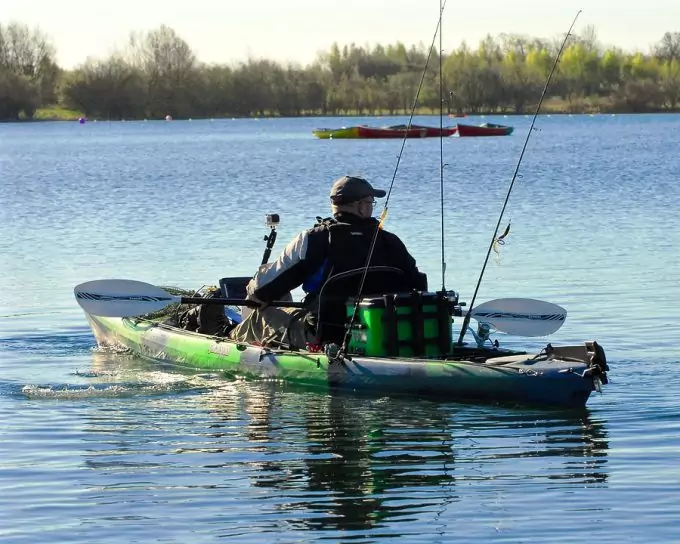
Nevertheless, if you are starting new on kayaks and need to learn how not to be lopsided by a giant fish on your tiny kayak, you must practice hard. Fishing on kayak alongside family and friends is an entertaining thing to do a well, on a weekend. Fishing in two or three kayaks helps in targeting, casting and catching the bait faster.
Depending on the type of kayak, you can go into exploring the water as well as the fish in different places. Plan your fishing types parallel with your gear. Do not catch fish that you cannot store or haul with you. Understanding how to fish with kayaking requires a good deal of controlling our kayak against the wind and waves, alike. Fishing is the next step to that.
Some ways to engage in expert fishing is through:
- Have a control of the kayak. The first thing qualifying you to fish with a kayak is if you have the control of your packed kayak. One needs to practise right not only to catch fish in the proper angle, but also to keep oneself safe and dry. You must invest in the right gadgets to seek proper control of your vessel. Modify the vessel with bait rods and other exclusive wells to store your catch. Learning to control a packed kayak with fish requires good training as well as packing light.
- Pack right and light. While you are packing your kayak to go out fishing, you must be aware of your kayak’s capacity to steer, skid and drift safe on board with or without the fish. Repack if you feel there is too much junk on your vessel, it is never too late than to drown or sink your vessel!
- Setting up the bait, catching and casting. Setting up the bait in the best way requires personalizing your bait as well as hook. There are kayaks available today with modern type of bait and hook available as an extension of the kayak. Setting the bait right after choosing your spot on a kayak is important to catch and cast the fish right-in. Catching the bait involves exclusive casting of your bait. Always cast your hook forward with your kayak from the boat’s centreline. There are various ways to cast and catch the fish as well as conveniently store it.
- Storing. After catching the fish and it has been out of water for long time, you need to store it add more. Modern vessels have exclusive line of built-in store wells for this. Else, carry good packaging material to collect your catch and keep it fresh and safe.
- Coming back safe. After storing your catch, balance the kayak and fish more or choose about paddling all the way back with the catch ashore, safe. Spending your stay on a hitchhiking trip around the islands is a good option if you know how to handle and fish on your kayak.
Water, its serenity, warmth, calm and peace is a sure way to be satiated!
What features to take in consideration?
The best fishing kayak in the market according to the experts is the Native Watercraft Ultimate Series. Some of the core important things to choose from when looking at your choice of kayak should be:
- Speed and stability. The most important category that determines your success rate of fishing on a kayak in any water body is the ability of your kayak to drive your kayak fast and in stable control. Critics advocate a convenient sit-in kayak that is long for ease and enhanced fishing.
- Length and width. Long kayaks are better than short ones and wider kayaks are stable as well as easier to control than the narrow ones. Another bonus to choosing your kayaks this way is the energy you save during paddling as well as targeting your catch. 10 ft- 1ft is a relatively long kayak that is stable and advocated for fishing.
- Tracking and maneuverability. Along a keel, rocker measures up the curve of a kayak’s hull. Low hulls are straight along the keel while high hulls are, curved-up along the keel. In addition, a lower hull kayak track well but turn bad while the higher hull kayaks are good on turning but bad on tracking. Lower kayaks are also slower while the higher kayaks are fast, in proportion with their wet surface area.
- Right gear. Having the right gear for your kayak is necessary to keep you in shape to go in the direction and fish successfully.
- Paddles- go for a double- long-paddled vessel;
- PFD: Personal floatation device is a necessary part of your kayak;
- Bait: Sit-on-top kayaks has battery operated bait hooking mechanism;
- Bait Knife: Marine-grade bait knife for live hooking up of the bait;
- Cooler: for storing fish or other beverages fresh;
- Rod-and-reel outfits: Bait casting outfits;
- Spray Skirt: for sit-in kayaks to keep the water off from wetting the inside of the kayak;
- Comfortable forearm placement. Wrist and forearms needs to be extra comfortable and is perfect with a bent shaft paddle;
- Light kayak. Lightest motor can help keep the kayak fast and in control, but can be harder to paddle;
- Stealth. Things like casting net and advanced baiting hooks will let you enough stealth to approach and catch schools of fish in one go.
- Types of fishing
- Seawater: Inshore and offshore waves make up seawater kayaking and fishing. The former aids in easing the paddler’s trouble of working too long against the firm winds and strong waves. The paddler has to cover or reach estuaries, creeks, sounds, marshes and flats, long and slim sit-in kayaks are preferred for fishing in sea.
The latter fishing is offshore kayaking, which requires expert ability to control the kayak and fish against the inner waves as well as stronger winds in the expanse of blue sea without horizon. Also, watch out for what might shrug at your bait, while you’re on the sea. - Freshwater: Still water and moving water kayaking for fishing is common in freshwater category. From tiny ponds to lakes, still water kayaking can be comfortable, accessible and most convenient method of fishing on a kayak. A sit in kayak that is long with low stability and rocker is good for this. The latter mode of fishing on moving water with kayaks requires a high stability with the kayaking as well as modes of fishing.
- Seawater: Inshore and offshore waves make up seawater kayaking and fishing. The former aids in easing the paddler’s trouble of working too long against the firm winds and strong waves. The paddler has to cover or reach estuaries, creeks, sounds, marshes and flats, long and slim sit-in kayaks are preferred for fishing in sea.
- Checklist when kayaking. Always have a checklist before venturing out to kayak wherever you plan to. Kayaking is the best fun to be, for fishing or any other form of relaxation, meditation and entertainment times. Make sure you forget nothing, while you are in the blissful embrace of the sea!
For the best fishing kayak, check out our article on this topic to help you learn more.
Things to keep in mind while kayaking to fish
With collapsible anchors, rod rack and holders, one can properly outfit the trip of fishing on kayaks offshore.
- Kayak fishing is the best water hitchhiking sport or entertainment
- You can fish fly out of the kayak.
- One can tip over a kayak at certain time of fishing, have the PFD on at all times of kayaking or kayak fishing
- A big fish can move you, but not drag you if your drag is set in the proper ways
- You should check for how much capacity of weight your kayak can carry and then, wrap it up in a plastic or your cooler
- There are ways to keep the baits live through live wells
- Practice with kayak anchors
- Electrically motored kayaks are safe and exceptionally good
- Practice many self-help and swimming techniques before venturing out to fish in the sea with your kayak
- Take a paddling class before going fishing offshore on your kayak
Kayak fishing is the best form of entertainment if you want to go solo or as a group, fishing in the deep waters of sea or your neighborhood lake. Are you a newbie in fishing? Then see our wonderful piece on fishing tips and guidelines for beginners, guaranteed to help you.
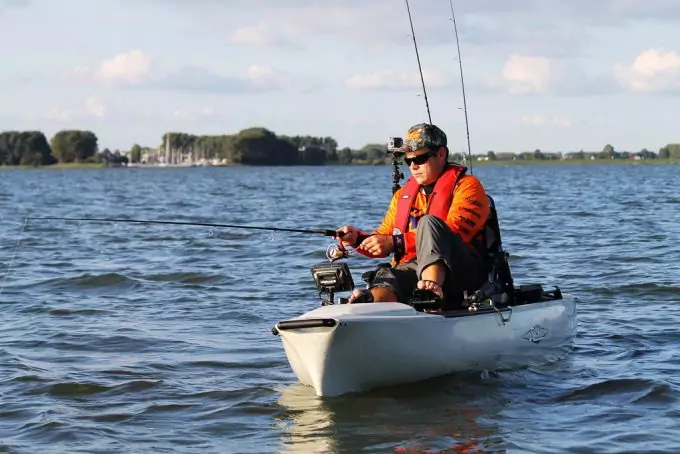
It is the best and most serene form of entertainment. At sea, fishing and kayaking are the best wondrous experience one must have before passing off. While you are at practicing fishing on kayaks, make sure you practise all ways to fish as many fishes you can. Moreover, wrap and souvenir the skeletons somewhere, kayaker!
Before going on a fishing expedition, check out our piece on how to get a fishing and hunting license.
Good Luck!



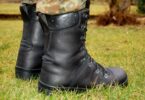

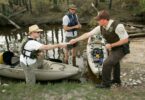
Kayaking is a slowly growing trend when it comes to fishing. My husband recently purchased one and he has been using it more frequently than the boat!
Apart from fishing, kayaking will help you with weight loss, stress loss, and strength gain. So, your husband is having fun and at the same time gaining from the activity.
I remember one time when I went Kayak fishing in Thailand. What an amazing experience! Reading through your article brought back so many wonderful memories, so thank you for writing it.
I quickly understood how it works and it became my favorite sport. Unfortunately, I learned the hard way to “dress for the occasion” because of the possibility of having to swim or getting your clothes wet.
Keep in mind to wear things that protect you from the sun and keep you cool. You should adjust your clothing with respect to the weather.
Balance balance balance!
Do not fall from that kayak while fishing (not that it ever happened to me!)
Fishing from a kayak allow you to travel to less accessible parts of the lake and therefore find better spots for fishing. Also rowing down the lake is great and will calm your mind.
Despite the naturally stable design of your kayak, the importance of good balance cannot be emphasized enough.